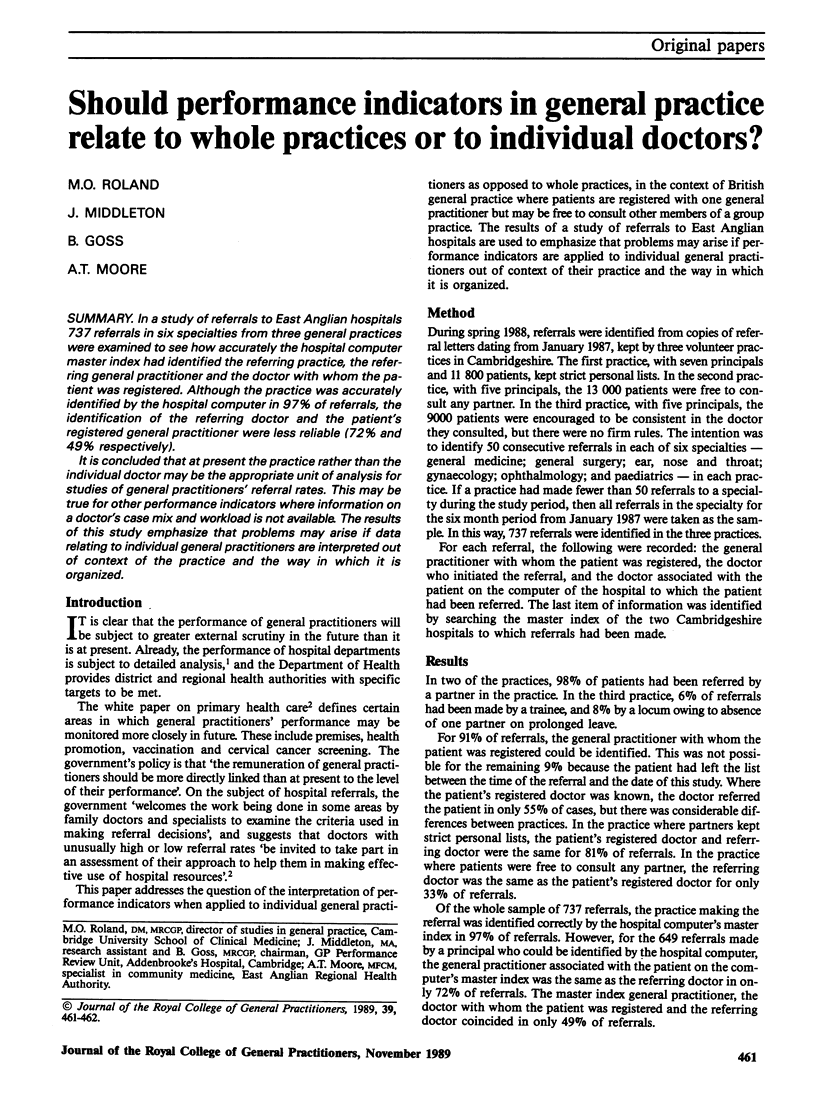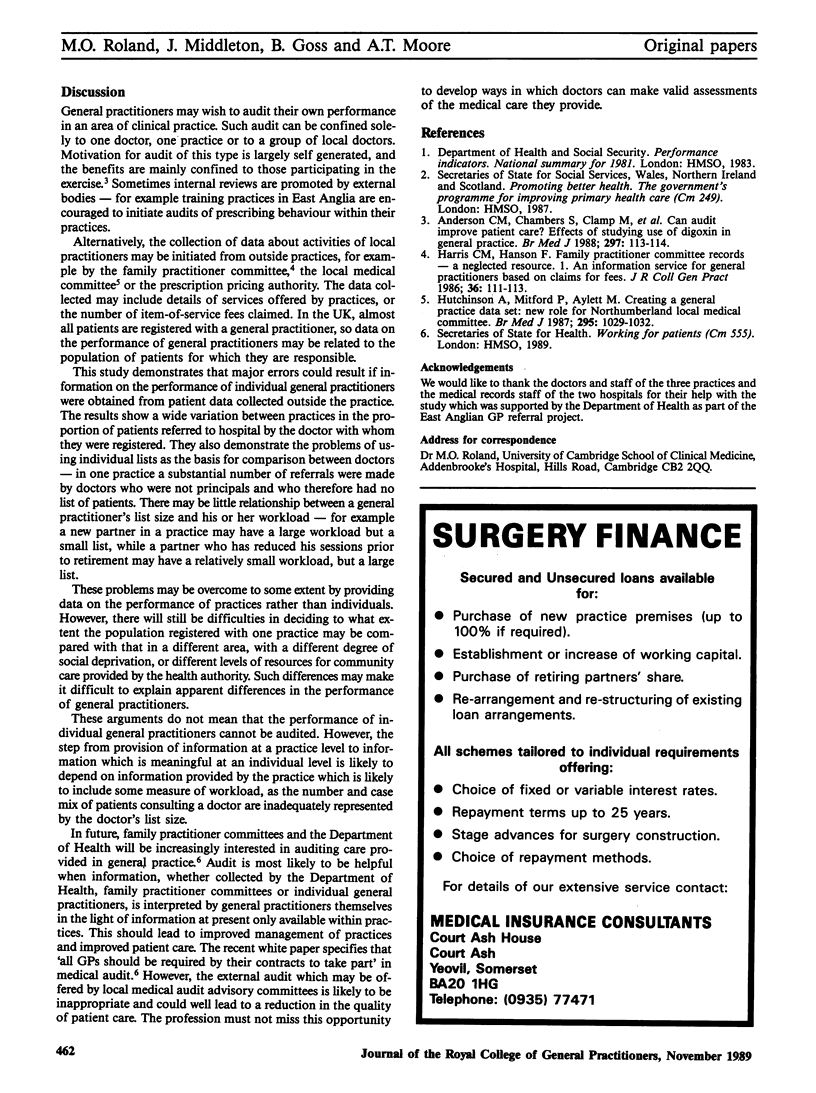Abstract
In a study of referrals to East Anglian hospitals 737 referrals in six specialties from three general practices were examined to see how accurately the hospital computer master index had identified the referring practice, the referring general practitioner and the doctor with whom the patient was registered. Although the practice was accurately identified by the hospital computer in 97% of referrals, the identification of the referring doctor and the patient's registered general practitioner were less reliable (72% and 49% respectively). It is concluded that at present the practice rather than the individual doctor may be the appropriate unit of analysis for studies of general practitioners' referral rates. This may be true for other performance indicators where information on a doctor's case mix and workload is not available. The results of this study emphasize that problems may arise if data relating to individual general practitioners are interpreted out of context of the practice and the way in which it is organized.
Full text
PDF

Selected References
These references are in PubMed. This may not be the complete list of references from this article.
- Anderson C. M., Chambers S., Clamp M., Dunn I. A., McGhee M. F., Sumner K. R., Wood A. M. Can audit improve patient care? Effects of studying use of digoxin in general practice. BMJ. 1988 Jul 9;297(6641):113–114. doi: 10.1136/bmj.297.6641.113. [DOI] [PMC free article] [PubMed] [Google Scholar]
- Harris C. M., Hanson F. Family practitioner committee records--a neglected resource. 1. An information service for general practitioners based on claims for fees. J R Coll Gen Pract. 1986 Mar;36(284):111–113. [PMC free article] [PubMed] [Google Scholar]
- Hutchinson A., Mitford P., Aylett M. Creating a general practice data set: new role for Northumberland Local Medical Committee. Br Med J (Clin Res Ed) 1987 Oct 24;295(6605):1029–1032. doi: 10.1136/bmj.295.6605.1029. [DOI] [PMC free article] [PubMed] [Google Scholar]


